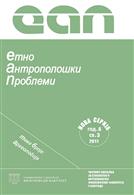Identity Restored: Nesmin's Forensic Facial Reconstruction in Context
Identity Restored: Nesmin's Forensic Facial Reconstruction in Context
Author(s): Branislav Anđelković, Joshua HarkerSubject(s): Archaeology, Museology & Heritage Studies, 19th Century, Transformation Period (1990 - 2010)
Published by: Филозофски факултет, Универзитет у Београду
Keywords: Nesmin; Belgrade mummy; 3D facial reconstruction; Akhmim; identity; human remains;
Summary/Abstract: A wide range of archaeological human remains stay, for the most part, anonymous and are consequently treated as objects of analysis; not as dead people. With the growing availability of medical imaging and rapidly developing computer technology, 3D digital facial reconstruction, as a noninvasive form of study, offers a successful method of recreating faces from mummified human remains. Forensic facial reconstruction has been utilized for various purposes in scientific investigation, including restoring the physical appearance of the people of ancient civilizations which is an important aspect of their individual identity. Restoring the identity of the Belgrade mummy started in 1991. Along with the absolute dating, gender, age, name, rank and provenance, we also established his genealogy. The owner of Cairo stela 22053 discovered at Akhmim in 1885, and the Belgrade coffin purchased in Luxor in 1888, in which the mummy rests, have been identified as the very same person. Forensic facial reconstruction was used to reproduce, with the highest possible degree of accuracy, the facial appearance of the mummy Nesmin, ca. 300 B.C., a priest from Akhmim, when he was alive.
Journal: Етноантрополошки проблеми
- Issue Year: 6/2011
- Issue No: 3
- Page Range: 715-728
- Page Count: 15
- Language: English

